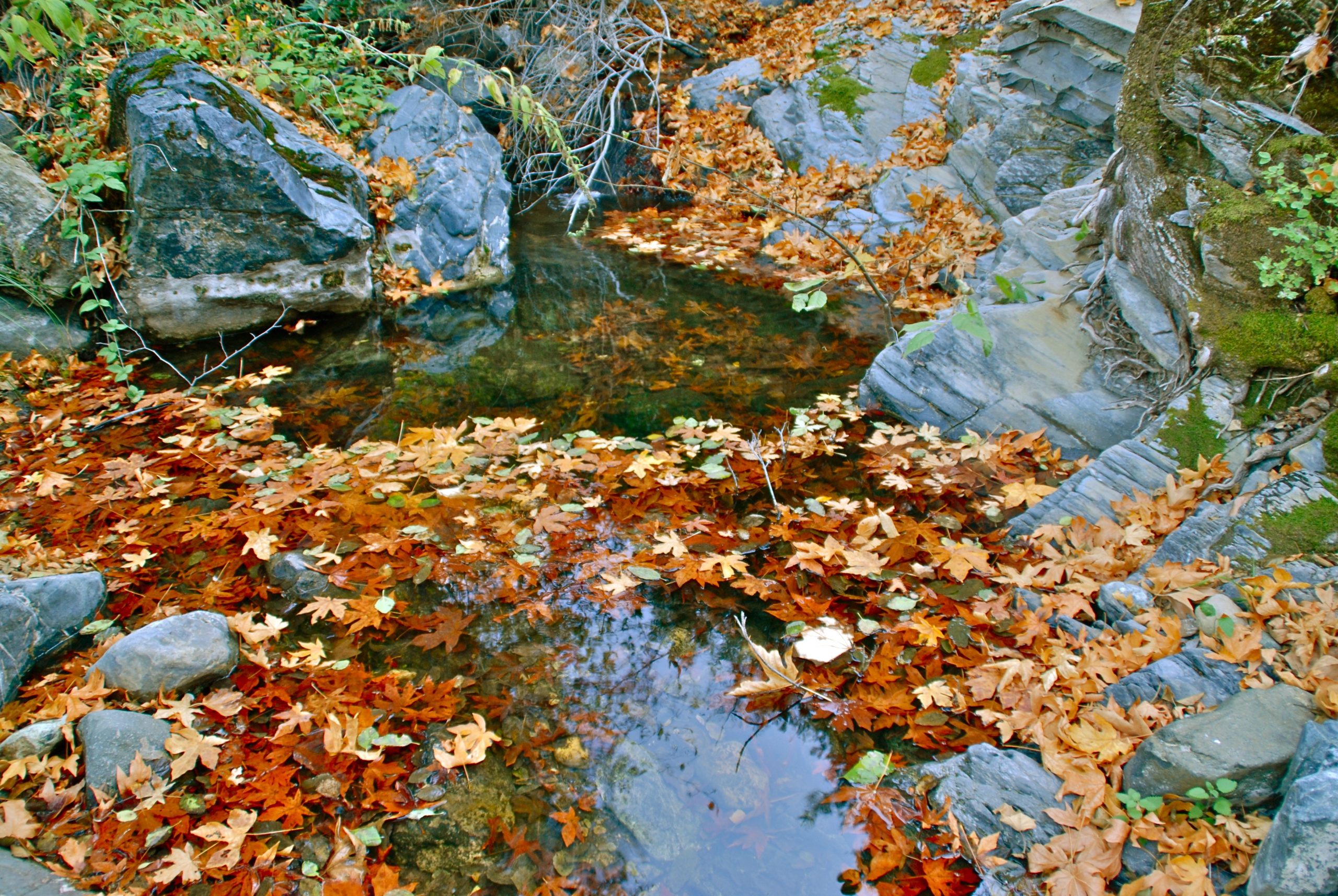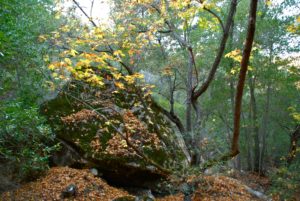Sunday, November 12: Fall Colors in Fir Canyon
Field Trip with Liz Gaspar
Sunday, November 12, 8:30 a.m. to 2:30 p.m.
Participation is limited to 20.
Advance registration begins October 12 at synature@west.net or 805/ 693-5683.
Members free/ non-members $20.
Featured image of pool along Davy Brown Creek. Photo by John Evarts.
Walking down Fir Canyon on the Davy Brown trail is like finding a secret passage in the mountains. The canyon is narrow at the top where the hike starts, and the stacked shale walls help to make it shady and quiet. Shy Brown Creepers live in this coniferous evergreen area year-round, attracted by the stands of misnamed Big-cone Spruce, which, confoundedly, gives the canyon its name. Giant Canyon Oaks grow in the canyon as well. The trail makes its way down slope and into exposed chaparral before settling into riparian woodland, where broadleaved deciduous trees—Big-leaf Maple, California Sycamore, White Alder—grow creekside and may be changing color and dropping leaves by this time. Along the way we’ll look for Lady Bird Beetles gathering to overwinter and signs of the 1993 Marre fire.
After a couple miles walking down canyon, we’ll head back up to the trailhead. Hikers have the option to
continue with the group to drive down Sunset Valley Road to Davy Brown Camp, the other end of the
trail. Here, we’ll tour a lower elevation suite of evergreen and deciduous trees and shrubs, including
Valley Oak, Blue Oak, Scrub Oak, California Juniper, and Black Walnut.
Walking poles are recommended for this hike, as the elevation change is moderate and sometimes
strenuous. Dress in layers, and bring a hat, lunch, and water. This walk is five to six miles total.
Liz Gaspar has led natural history field trips for the Santa Ynez Valley Natural History Society and other organizations. She was the park naturalist at Cachuma Lake for twenty years, and while there, co-authored “Wildflowers and Other Plants of the Cachuma Lake Area, Santa Barbara County,” published by County Parks in fall 2015. She earned her master’s degree in plant ecology from UCSB, where she studied native grasses.











